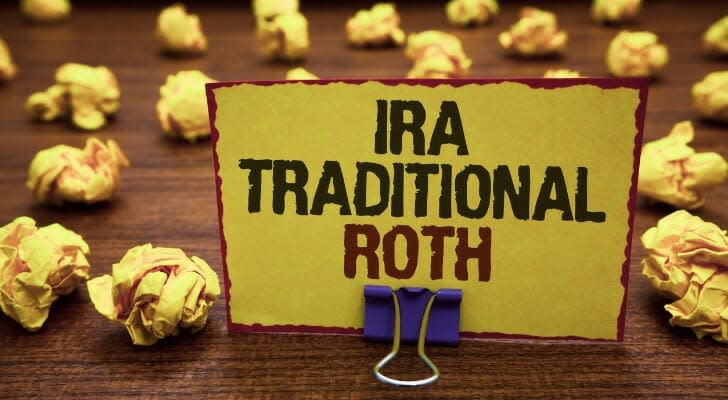Doing a Roth Conversion Like This Can Minimize Your Taxes
One of the costs of converting a traditional IRA to a Roth IRA is how much you will pay in taxes. In some cases, those taxes can be a heavy burden, especially if you have been diligent in building up the balance in your traditional IRA. Fortunately there’s a way to put a lid on your tax liability as you convert to a Roth. Rather than converting the entire traditional IRA all at once, you could do a series of partial conversions. Consider working with a financial advisor to help ensure that you are handling your tax-advantaged accounts in the smartest way.
Roth Conversion Basics
There are two key reasons to convert a traditional IRA to a Roth IRA. One is that you can withdraw money later tax free, and second is that there are no required minimum distributions. Remember that early withdrawals (before age 59.5) from a traditional IRA are subject to a 10% penalty. When you convert from a traditional IRA to a Roth you’ll want to make sure you do so in a way that doesn’t trigger the penalty. You have 60 days to convert if you move the money. It’s generally safer to let your brokerage(s) handle the conversion so you don’t forget to make the 60-day deadline.
Keep in mind that money in your traditional IRA has yet to be taxed. The point of a Roth IRA is that it’s already taxed money that grows tax-free. So, to convert your traditional IRA to a Roth IRA you’ll have to pay ordinary income taxes on your traditional IRA contributions in the year of the conversion before they “count” as Roth IRA funds. The taxable amount that you convert to a Roth gets added to your taxable income for that year and is taxed at the appropriate rate.
Doing Partial Roth Conversions
Just as dollar-cost averaging helps ensure that you’re not buying high and selling low, a common mistake some retail investors make – doing a series of partial Roth conversions can help put a lid on what you will owe the government in taxes, according to Morningstar. The point is to convert just enough each year to keep you from being bumped up into a higher tax bracket.
For example, in 2022 a married couple earning up to $178,150 would be in the 22% tax bracket. But this couple would be in the 24% tax bracket if their total taxable income was from $178,151 to $340,100. Now, suppose that in 2022 they have taxable income of $125,000; a 22% tax rate on that amount is $27,500. If they convert a traditional IRA with a $115,000 balance to a Roth, that would result in their taxable income rising from $125,000 to $240,000. That puts them in a 24% tax bracket, and 24% of $240,000 is $57,600.
Now, however, suppose they decide on a partial Roth conversion. Rather than convert the entire $115,000 traditional IRA to a Roth, they only convert $50,000. That puts their taxable income at $175,000, still within the 22% tax bracket. A 22% tax on $175,000 is $38,500 – far less than the $57,600 they would have owed if they had converted the entire traditional IRA into a Roth.
Considerations of Partial Conversions
Clearly, partial conversions of traditional IRAs to Roth IRAs, done correctly, enable you to avoid unnecessary federal taxes. But besides this obvious benefit, there are some challenges that should be factored into your decision to do a partial conversion.
For example, what are the relevant state taxes? If you’re moving into a state that has a higher tax rate you’ll need to take that into consideration as you calculate how much of your traditional IRA to convert. Secondly, what will you earn in a calendar year? That can be hard to predict, especially if your compensation depends on commissions or if you stand to receive a bonus or you plan to exercise an incentive stock option.
Finally, keep in mind that extra income from a Roth conversion can result in your losing the subsidy you are entitled to as part of the Affordable Care Act.
Bottom Line
The primary reason to consider partial Roth conversions is to control future tax liability. You do this by “filling up” your current tax bracket to cap your taxable income at the maximum level of your existing tax bracket. This is sometimes called tax bracket arbitrage, paying taxes now at a lower rate than you otherwise would have to do at a future date.
Retirement Tips
Don’t miss out on news that could impact your finances. Get news and tips to make smarter financial decisions with SmartAsset’s semi-weekly email. It’s 100% free and you can unsubscribe at any time. Sign up today.
For important disclosures regarding SmartAsset, please click here.
Photo credit: ©iStock.com/designer491, ©iStock.com/Artur, ©iStock.com/kali9
The post Doing a Roth Conversion Like This Can Minimize Your Taxes appeared first on SmartAsset Blog.






